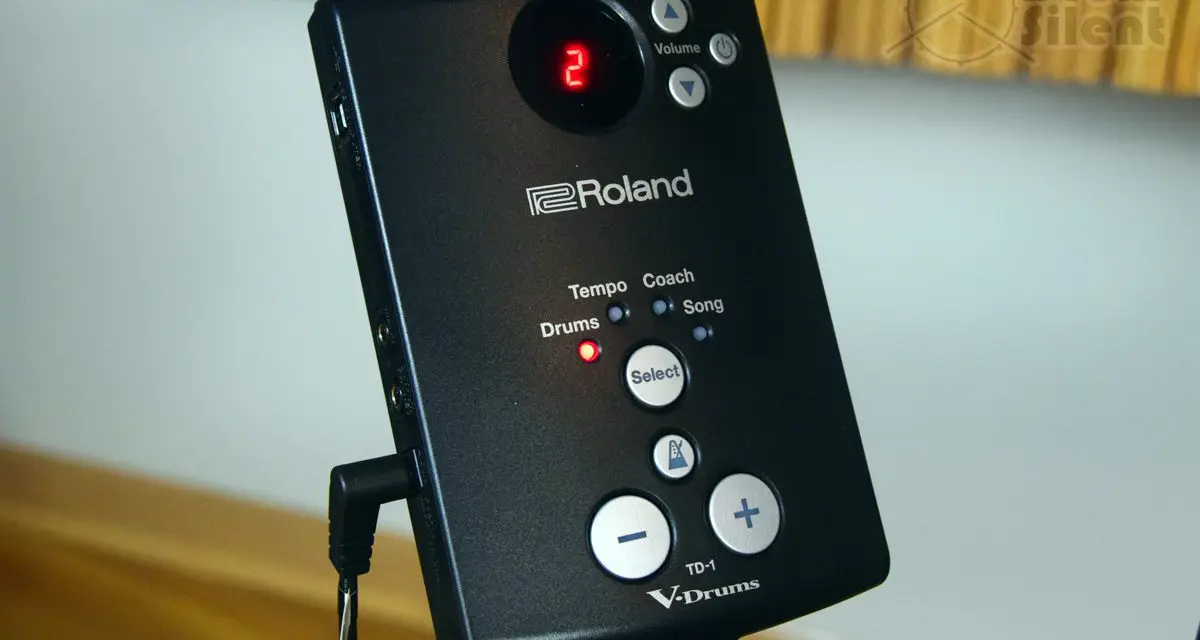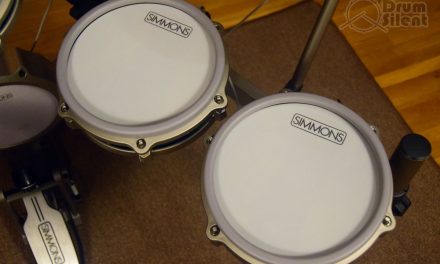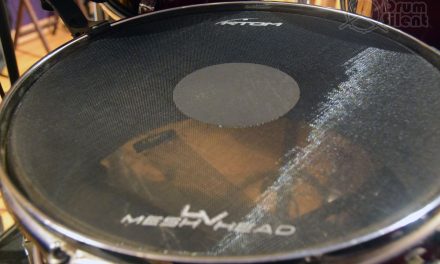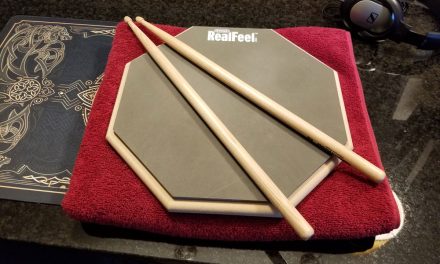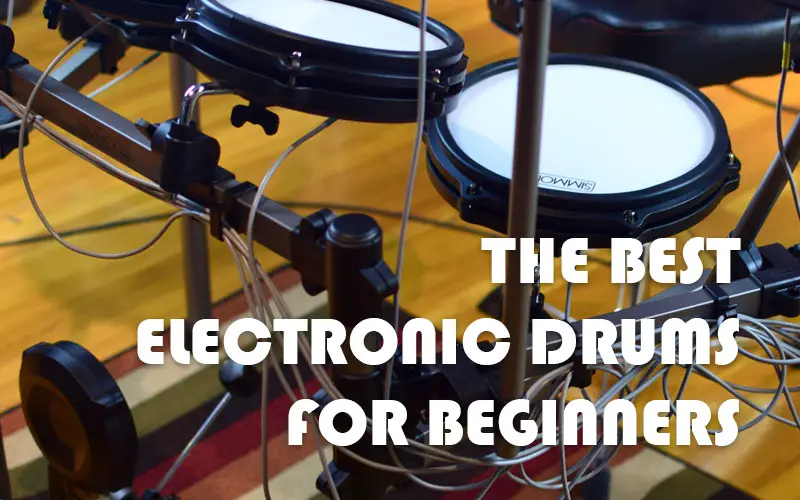Drum modules can contain a wide array of features and functions, and not all drum modules are equal in this regard. On the budget end the modules are pretty basic, but some of the more expensive and advanced modules really pack in lots of useful features for practice, performance, recording and sound design.
Let’s take a look at the types of features drum modules can offer so that you can make a better decision if you’re looking to pick up an electronic drum kit.
The Sound Library
The sound library is the full lineup of sounds that are available in the drum module. The sounds in a sound library are made from samples recorded in a studio environment and electronic sounds that are generated with synthesis. Most drum modules will have a mix of recorded sound samples for the acoustic types of kits and synthesized sounds for the more electronic sounding kits. Most sound libraries focus on percussive sounds but sometimes you’ll find some other sounds as well.
Cheaper drum modules tend to have a smaller library of sounds, and as you go up to more expensive modules you’ll start to find larger sound libraries built in.
The Preset Drum Kits
Pretty much all drum modules will organize the sounds into a lineup of preset drum kits. Drum kits on most drum modules are designed to fit with whatever styles of music are popular while the module is on the market. It’s common to find modules that have kits for rock, pop, country, Americana, metal, funk, rap and other worldly styles of music. Cheaper drum modules tend to have less drum kits and more expensive modules tend to have more.
Custom Drum Kits
Some modules allow you to create your own drum kits and save them to custom kit slots. When this feature is present, you can usually choose from any of the sounds in the sound module to put together your own kit. Not all cheaper modules will have the ability to create and save custom drum kits, but it’s a common feature to find on anything in the intermediate to advanced drum modules.
Installing New Drum Kits From The Cloud
This is becoming a more popular feature, and it’s being used by manufacturers such as Roland and Simmons. This type of feature allows you to connect to a cloud account from the manufacturer and download/install new kits to your drum module. We’ll be seeing this become more common over time.
Load Your Own Sound Samples
In addition to the ability to create custom drum kits using the internally sound library, some modules allow you to import your own drum samples and assign them to custom drum kits.
The transfer or loading of samples is usually done via a USB connection to a computer or with a USB drive. Some modules have built-in memory for loading samples, and some will require you to install a memory card to add the storage space and use the feature.
If this feature is available, there will usually be limits on the types of file formats that can be used, the size of the sound samples, and the total amount of samples that can be loaded.
Sound Design Capabilities
If you’re the type of drummer that wants to be able to craft your own custom kits and you’ll want to pay attention to the sound design features and capabilities available in drum modules. Many basic drum modules don’t really have any sound design features, but the more advanced modules do.
Sound Editing
Some drum modules will allow to you edit the sounds within a kit, and save the edited sounds along with custom drum kits. Depending on the module, the types of parameters that can be edited might included volume, pitch, panning, decay, attack and more. These types of features alone are usually capable of wildly transforming the sounds around the kit.
Drum Sample Layering
This is the ability to layer multiple drum samples on top of each other so that they play at the same time for a certain pad. An example of this would be assigning two different snare sounds to the snare pad to create a more rich and complex sound. Drum modules that allow sample layering also usually let you choose the volume of each sample that is being layered to give more weight or less weight to sounds that are layered.
Effects Processing
The ability to add effects can be considered part of the sound design, but we’ll discuss this as a separate function since effects are often found on drum modules without other sound design options.
Many drum modules have effects processing built in, and some drum modules offer a wider range of effects or different implementation capabilities than others.
Adding Effects to Individual Sounds or Whole Drum Kits
Usually when you see effects processing available in a drum module, it means you’ll be able to add effects to either single sounds within the kit or process the kit as a whole. Not all drum modules are equal in this regard, so it can be worth it to dig into the effects processing features to see what the module offers – especially if you want certain types of effects processing options.
The more common types of effects that can be found in drum modules are reverb and compression. Depending on the module you might be able to add reverb or compression to a single sound such as the snare, or you might be able to add it to the whole drum kit and not be able to individually assign it to a sound, or you might have both options.
Some drum modules offer a lot more effects options. You might find effects such as delays, distortion, chorus and more. It can be worth it to look up the sound effects lists for specific drum modules if this is a priority for you. You can usually find manuals with the effects lists posted online by the manufacturer.
Trigger Input Options
The pads need to connect to the drum module, and some drum modules do it differently than others.
A common thing you’ll see more on budget to intermediate level kits is the use of a cable snake. All of the cables for each pad are connected to a single multi-pin connector. So you basically plug each individual cable end into the pads around the kit, and the plug in the single cable connector to the module. This works fine but can be limiting for more advanced implementations.
For drum modules that use a cable snake, sometimes they will also offer a couple more individual inputs on the back of the module so that you can connect extra pads such as another tom or cymbal pad. Some budget kits have this option so that they can be expanded, even if it’s in a limited way. Good examples of kits that do this are the Alesis Nitro Mesh and the Simmons Titan 50.
Some drum modules have individual inputs for each of the pads or triggers around the kit. This is usually seen on more advanced drum modules and it provides more flexibility and expansion options when connecting pads to the module.
Digital Pad Inputs
Some brands such as Roland are moving towards using digital pads that require a USB input to connect to the module. These digital pads, such as the Roland VH-14D hi-hats, only work with specific modules. If you are interested in getting some more advanced drums that use digital pads, it’s a good idea to do the research on compatibility between the different models so that you know what pads will work with your module.
MIDI Connectivity for Controlling or Recording
MIDI outputs are very common and most drum modules will have at least one MIDI output. This output can be used to connect your drum module to a computer or other types of MIDI compatible devices and use your drum machine as a controller.
This allows you to play software such as EZ Drummer on a computer with your electronic drum kit. It also allows you to record the MIDI output from your drum module into a DAW that can record and playback MIDI tracks.
This opens up a lot of flexibility outside of what your drum modules can offer internally. If you have even a basic drum module with a MIDI output, you can connect to a computer and use software to give yourself a wider range of drum kits and to record and edit your performances with ease.
On the flip side, some drum modules also have MIDI inputs. This allows you to input any MIDI capable device to play sounds from the drum module. It can be useful in certain scenarios, but the more useful MIDI option is usually the MIDI outputs from the drum module.
MIDI Mapping Capabilities
In addition to outputting over MIDI, some drum modules will also allow you to set the specific MIDI note that each pad transmits. This can be useful for setting up specific mapping between the drum module and software or other devices. If the drum module doesn’t allow MIDI note mapping itself, sometimes the software you are using when connected to a computer will allow you to edit the mapping there.
Bluetooth Connectivity Options
Some drum modules offer the ability to connect via Bluetooth. A Bluetooth connection feature is most commonly used like an aux input so that people can connect smartphones to the drum module via Bluetooth to play along with music while drumming.
Another feature that’s starting to show up more is transmitting MIDI over Bluetooth. This can be a neat way to connect devices with less cables.
Bluetooth headphones is a common thing people ask about when looking into electronic drums. Bluetooth headphones don’t work with drum modules due to latency issues. There would be too much of a delay between hitting the pads and hearing the sounds on the Bluetooth headphones.
USB Connectivity for MIDI or Audio
Many newer drum modules, even some of the budget level modules, offer USB outputs that can transfer both MIDI or audio via USB to a computer.
This means that you can use the USB output to send MIDI signals much like a MIDI output would. It also means that you can output the stereo output signal or in some cases individual channels of sound to your computer.
Modules that can output individual channels of audio to a computer over USB can work great for recording purposes. You can capture the individual tracks, such as snare, kick, toms, etc. onto separately recorded tracks just like if you were using an acoustic drum kit with a full set of mics around the kit. This allows you to mix the different sounds from the drum module separately during post production, which opens up a lot of flexibility for recording and mixing engineers.
USB Memory and Storage Options
Some drum modules allow you to expand the memory and storage space with USB drives or SD cards. The types of modules that have this feature are usually doing it to offer more storage for recordings or for loading custom sounds and drum kits. Drum modules that offer expanded storage options might have a specific type or size range of storage that is compatible, so it’s best to check the manual for specifics before picking up that extra USB drive or SD card.
Sensitivity, Cross-talk & Similar Settings
Most drum modules offer settings for pad sensitivity, cross-talk and other similar options so that you can tweak the pad response for better performance.
Pad Sensitivity – This setting will allow you adjust how hard a pad needs to be hit before it generates a sound. Sensitivity settings can be tweaked to help fix double triggering or re-triggering issues.
Cross-talk – Vibrations travel through the pads and drum rack and can sometimes trigger other pads unexpectedly. This setting can be used to adjust how much other pads will respond when a nearby pad is hit.
Re-trigger Cancel – This features is also sometimes referred to as “scan time”. It keeps a sample or sound from replaying within a specified amount of time, which can help with double triggering or re-triggering issues.
The pad sensitivity and cross-talk options are found on most drum modules, scan time features are less common.
Pad & Pedal Configuration Options
Some modules also have the ability to tell the module exactly what pad model you have plugged into a trigger input so that it can fully utilize the features contained in the pad. An example of this would be Roland’s ecosystem. Some of their modules allow you to set which specific hi-hat, cymbal pads or drum pads you are using around the kit, and the module will then take advantage of that pads features.
Another feature commonly found on drum modules is the ability to calibrate pedals such as the hi-hat pedal. This allows you to dial in the specific up/down range of the pedal, which can help if accuracy is off or if you replace the pedal with a different model.
The Metronome
All drum modules will have a metronome. Or at least I haven’t found one yet that doesn’t. The metronome is the feature you should be using the most if you want to develop a good sense of timing. You should always practice with a metronome.
Some drum modules can get somewhat advanced in the metronome area. They will usually at least offer the ability to change tempo and time signature. Some let you change the click sounds. Some get more interesting and can do layered time signatures and other crazy stuff for advanced drummers to use.
Coaching and Practicing Options
It’s pretty common to find coaching options built into drum modules. Look for these types of features if you are a beginner drummer and want some guidance when getting started.
These types of features usually include modes that challenge you to play along with changing tempos, changing time signatures, disappearing click tracks and more.
Internal Recording Features
Some drum modules will let you record your performances in either audio or MIDI and store it internally for playback. This is usually intended more for practice or evaluation purposes rather than studio recording purposes.
A common way that features like this are implemented is with the coaching functions. The module might have a feature to play along with a song and record that performance so that you can play it back and see how well you did.
If you are looking to do more serious studio recording, you’ll want to instead look out for individual audio outputs or USB audio connectivity features, which we touched on earlier.
Set List Features
A set list feature is for drummers who want to use their electronic drum kit to play live, and for this reason it’s usually found on intermediate to advanced modules. You rarely see this feature on budget drum modules.
Set list features allow to you set a specific drum kit for each song in a set list. Then, when you are on stage, you can easily rotate through the kits you need in proper sequence during the set and take the guesswork out of it. This is a great feature for drummers who like to change up their drum sound on stage.
Finding and Reading the Manual Before You Buy
If you’re still reading all the way to this point, we hope that you have found this to be a bit useful if you’re trying to pick a drum kit or a drum module.
Now that you know what to look for in a drum module, we recommend that you take a closer look at the manual for any kit you are considering buying. It’s a cheap way to evaluate what the module has inside of it, right down to a T. The manual usually will cover every feature and will have a list of drum kits, sounds and effects. If you don’t find it in the manual, chances are the module can’t do it.

